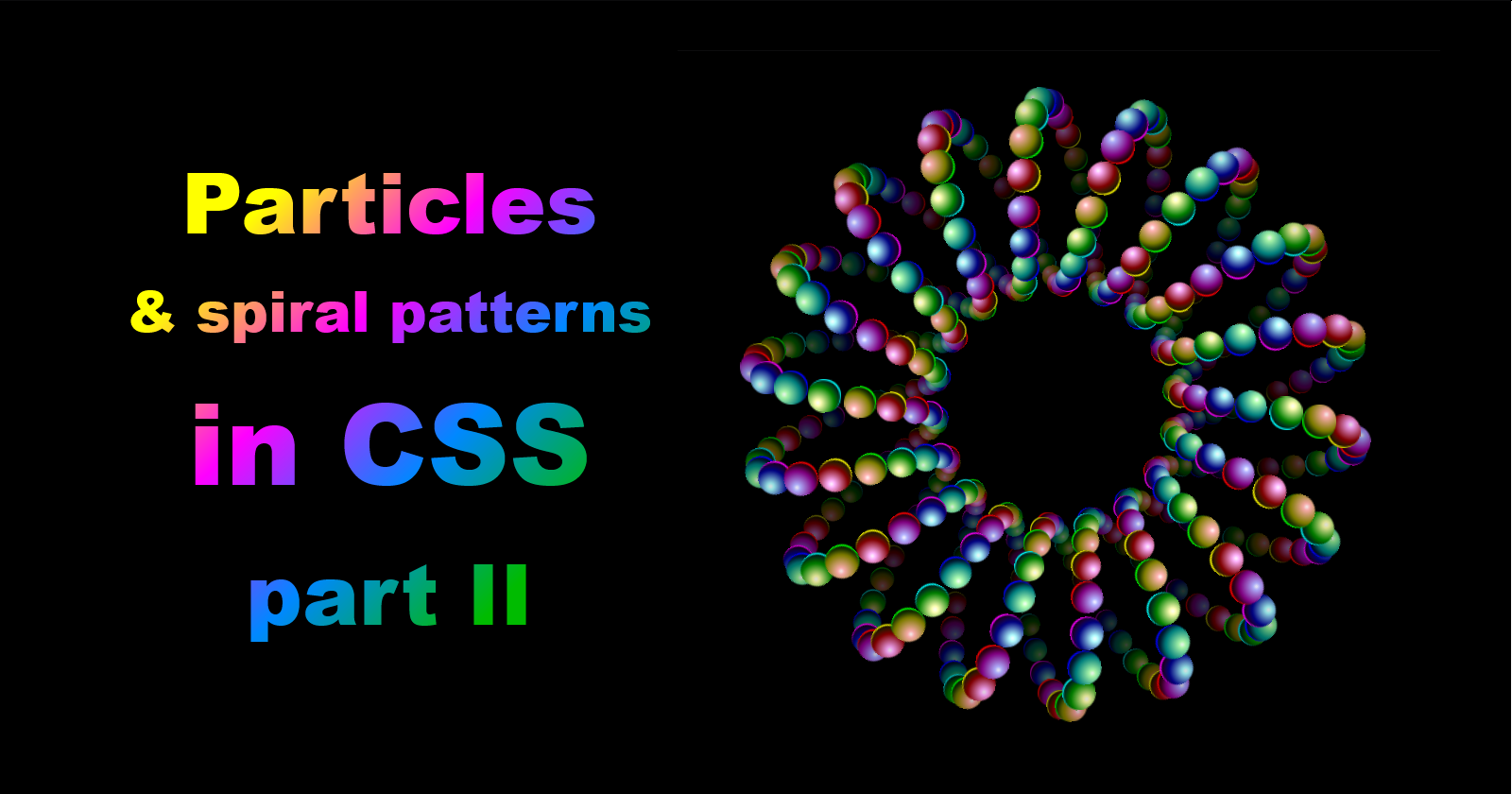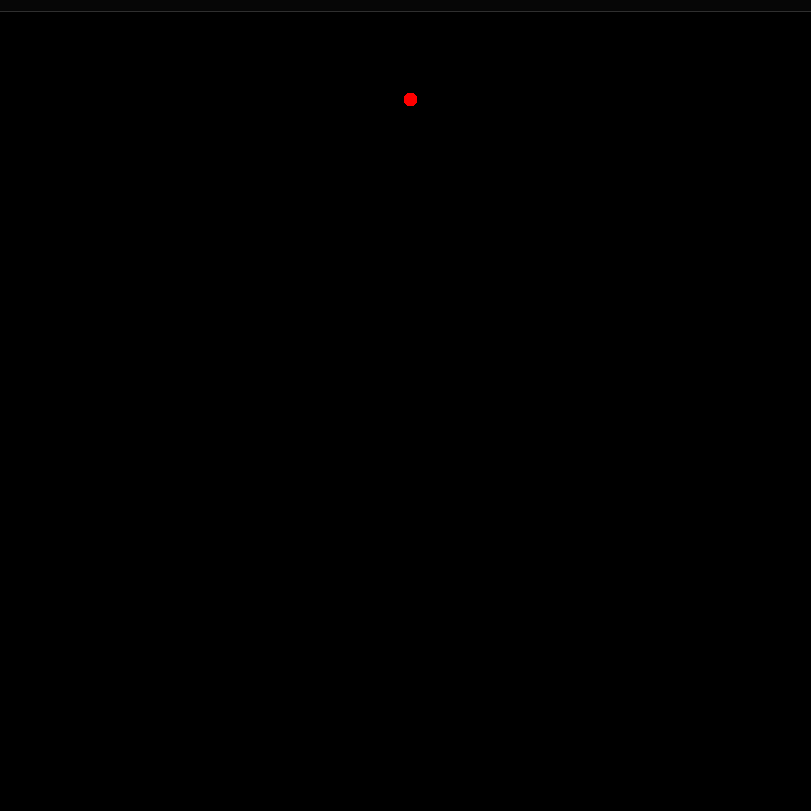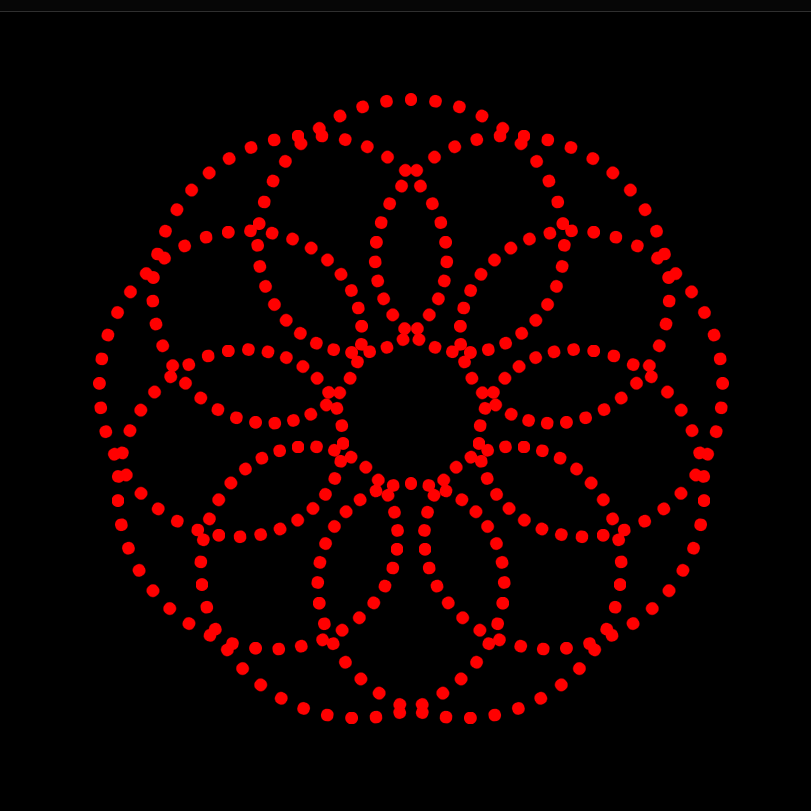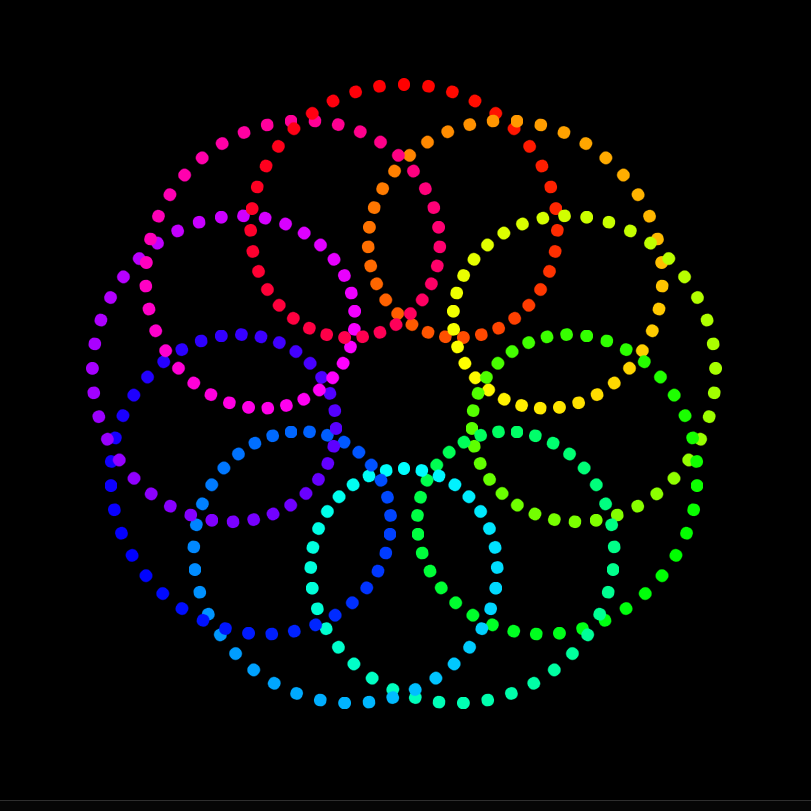Particles & spiral patterns in CSS: part II
 Maciek Fitzner
Maciek Fitzner
The week of Codepen's particle challenge is up - but I'm far from done obsessing over particles and serpentines. In Friday's Part I I merely scratched the surface, showing you my first demo for this week's challenge:
and based on that, showed you how to draw the most basic 2D serpentine pattern:
To reiterate: the dots are deposited in equal intervals by a line spinning around its center point and also moving in a straight line - like so:

For my second demo I decided to push it a little further in terms of complexity:
and then tweaked it a bit:
It was a headache to coordinate - and now might be a headache to wrap your head around ;)
Let me break down what's happening here - which is only a slight modification of my original linear serpentine. This time, however, instead of traveling along a straight line from one end to another, the pivot point is stationary. It is at the center of the viewport. Also, the line that spins around like the hand of a clock isn't the one drawing. It is merely a join for another line, and it is that one that deposits the dots as it spins while being spun itself:

As complex as that sounds, the HTML setup for it is almost as simple as for the linear serpentine:
<div class="spiroGraph"> <!-- the container for our serpentine -->
<div class="arm"> <!-- the spinning joint anchored at the center of the viewport -->
<div class="foreArm"></div> <!-- the joing that spins while also being spun -->
</div>
</div>
We'll need to spawn a large number of the .arms - and like last time, the easiest way to do that is using Emmet - which is built into VS Code and Codepen. Instead of typying up the entire HTML markup above manually, just type:
.spiroGraph>.arm*180>.foreArm
and press Enter (VS Code) or Tab (Codepen) - and witness 180 .arms, each with a .foreArm, spawned instantly.
That does it for HTML - so let's go over to our style sheets. As before, let's use SCSS - which will allow us to write most of our code just as we would in plain CSS, but will let us use for-loops for quickly styling each of our 180 .arms and .foreArms, and also declare variables.
First, let's set up the scene:
$particles: 360; /* an SCSS variable defining the number of particles across the whole serpentine; not the same as a CSS variable */
body {
margin: 0;
background-color: #000; /* hex code for the color black */
height: 100vh; /* so that the body takes up the entire viewport's height */
display: grid; /* we'll want to center the content */
align-content: center;
overflow: hidden;
font-size: .8vmin; /* setting font size to be .8 of 1% of the shorter viewport dimention (height on desktop, width on mobile */
}
.spiroGraph {
position: relative; /* thus the container will be the point of reference for its child, the .foreArm */
display: flex;
height: 100em; /* using font size as a unit for object size - making it 80% of the shorter vieport dimension */
justify-content: center; /* we'll want the .arm to be placed at the center of the horizontal axis */
}
Now for all the moving bits:
.arm {
--particles: #{$particles}; /* a proper CSS variable that takes its name and value after its SCSS counterpart */
position: absolute; /* the container floats freely, independent of any other objects */
bottom: 50em; /* the bottom end of the .arm is anchored at the center of the viewport */
height: 30em; /* since there's got to be room for the .foreArm, we don't want it to be be 50em - but can't be less than 25em */
transform-origin: bottom; /* its pivot point is located at its bottom end */
rotate: calc(360deg/var(--particles)*var(--turnStep)); /* it does a full 360 over 360 particles - ergo each step is 1deg - but this formula will let you tweak that number */
}
.foreArm {
--loops: 9; /* we'll want our serpentine to have 9 loops */
position: absolute;
bottom: 100%; /* its bottom will be where normally its top would be; thus it'll be anchored at the tip of the .arm */
height: 20em; /* 50em (half of the viewport's height) minus the height of the .arm */
/* also note we didn't declare the width for either - which is why we do this: */
display: flex;
justify-content: center; /* the .foreArm's child WILL have width, and we need to cente it */
transform-origin: bottom; /* its pivot point is located at its bottom end */
rotate: calc(360deg/var(--particles)*var(--loops)*var(--turnStep)); /* it has to make 9 loops of full 360 rotations, ergo it has to spin 9 times faster than the foreArm: 1deg x 9 = 9deg */
}
.foreArm::before {
content: ''; /* no text */
position: absolute;
width: 2em;
aspect-ratio: 1; /* the height matches the width */
border-radius: 50%; /* our particle will be round */
background-color: red /* for now */
}
Since we haven't set up the variable of --turnStep for each .arm:nth-child, no rotation was applied - so what you're probably seeing right now is a single red dot in the middle at the top of the container;

Let's fix that - and quickly loop over the variable:
@for $i from 1 through 360 {
.arm:nth-child(#{$i}) {
--turnStep: #{$i};
}
}
Now that's more like it. Are you seeing a spiral of 360 red dots?

We can just as easily add some more color to it - by applying the same degree-based formula that we did to rotation.
.foreArm::before {
content: ''; /* no text */
position: absolute;
width: 2em;
aspect-ratio: 1; /* the height matches the width */
border-radius: 50%; /* our particle will be round */
background-color: hsl(calc(360deg/var(--particles)*var(--turnStep)) 100% 50%); /* the color will cycle through the full spectrum of colors of the rainbow */
}
That should make our serpentine look like this:

And thus we get a proper spirograph-like serpentine. But again, this is really basic, and there's a whole lot more you can do with it. You can make more - or fewer - particles as you like (as long as you make sure your HTML and your SCSS have the same number of objects). Or experiment with dot sizes - or arm lengths and centers of rotation.
To make things easier, here's a live demo on Codepen that you can tinker with. For instance, see the madness that happens when you just reverse the direction of rotation on the .foreArm - like this:
rotate: calc(-360deg/var(--particles)*var(--loops)*var(--turnStep)); /* notice the minus before 360deg - that makes it assume the negative value, and this reverse the direction of rotation */
Have fun - and come back next time for another crazy loop done in (almost) pure HTML and CSS.
Subscribe to my newsletter
Read articles from Maciek Fitzner directly inside your inbox. Subscribe to the newsletter, and don't miss out.
Written by
